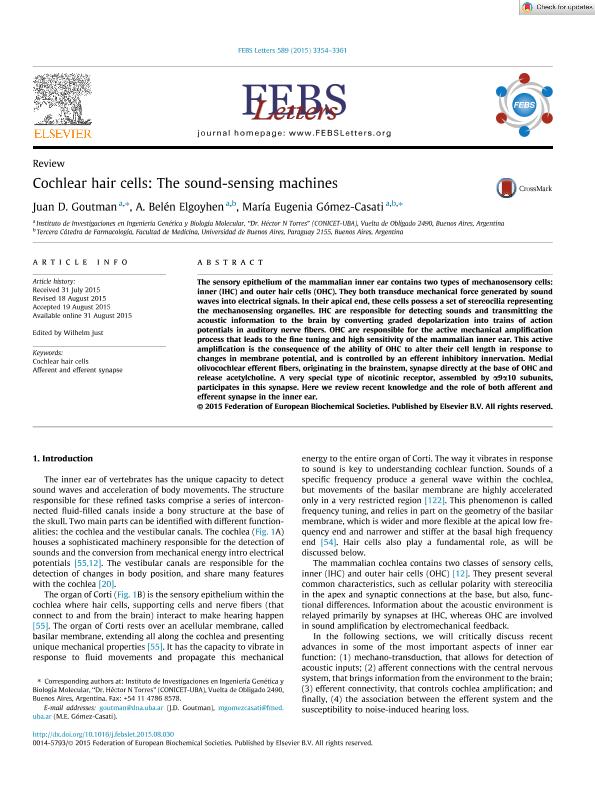Artículo
Cochlear hair cells: The sound-sensing machines
Fecha de publicación:
31/08/2015
Editorial:
Elsevier
Revista:
Febs Letters
ISSN:
0014-5793
Idioma:
Inglés
Tipo de recurso:
Artículo publicado
Clasificación temática:
Resumen
The sensory epithelium of the mammalian inner ear contains two types of mechanosensory cells:inner (IHC) and outer hair cells (OHC). They both transduce mechanical force generated by soundwaves into electrical signals. In their apical end, these cells possess a set of stereocilia representingthe mechanosensing organelles. IHC are responsible for detecting sounds and transmitting theacoustic information to the brain by converting graded depolarization into trains of actionpotentials in auditory nerve fibers. OHC are responsible for the active mechanical amplificationprocess that leads to the fine tuning and high sensitivity of the mammalian inner ear. This activeamplification is the consequence of the ability of OHC to alter their cell length in response tochanges in membrane potential, and is controlled by an efferent inhibitory innervation. Medialolivocochlear efferent fibers, originating in the brainstem, synapse directly at the base of OHC andrelease acetylcholine. A very special type of nicotinic receptor, assembled by a9a10 subunits,participates in this synapse. Here we review recent knowledge and the role of both afferent andefferent synapse in the inner ear.
Archivos asociados
Licencia
Identificadores
Colecciones
Articulos(INGEBI)
Articulos de INST.DE INVEST.EN ING.GENETICA Y BIOL.MOLECULAR "DR. HECTOR N TORRES"
Articulos de INST.DE INVEST.EN ING.GENETICA Y BIOL.MOLECULAR "DR. HECTOR N TORRES"
Articulos(OCA HOUSSAY)
Articulos de OFICINA DE COORDINACION ADMINISTRATIVA HOUSSAY
Articulos de OFICINA DE COORDINACION ADMINISTRATIVA HOUSSAY
Citación
Goutman, Juan Diego; Elgoyhen, Ana Belen; Gomez Casati, Maria Eugenia; Cochlear hair cells: The sound-sensing machines; Elsevier; Febs Letters; 589; 22; 31-8-2015; 3354–3361
Compartir
Altmétricas




